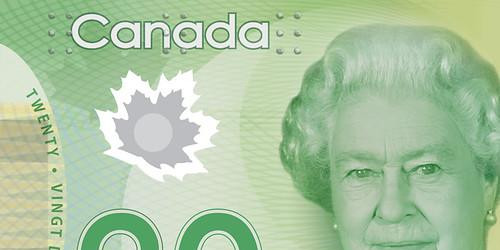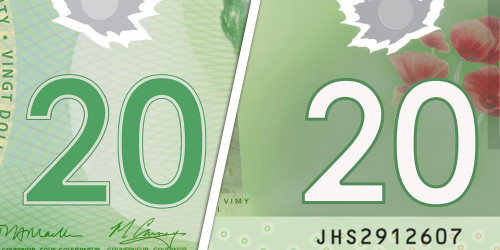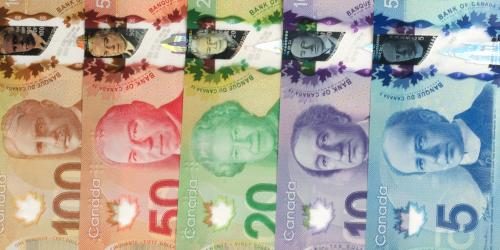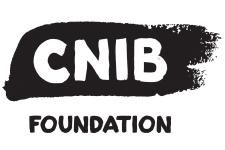This section includes information and products that explain how blind and partially-sighted Canadians can determine the denominations of bank notes.
Accessibility features
Canada’s bank notes are supported by a number of accessibility features designed to help people who are blind or partially sighted recognize all five denominations with confidence.
Vertical $10 note
The $10 bank note featuring the portrait of Viola Desmond is Canada’s first vertically oriented note, thus Canadians who are partially sighted and who use the large numbers will need to orient this note vertically to view the denomination at the correct angle.
The colour contrast of the large numbers has been optimized on this note. It is light on a dark background on the front of the note and dark on a light background on the back. This pairing is the opposite of that which appears on the current Frontiers series polymer notes.
The distinct colour of the note continues to be purple and the tactile feature is in the same position relative to the large window on the front of the note.
Frontiers series and other notes
These elements are not security features and should not be used to verify that bank notes are genuine.

Tactile feature
The tactile feature consists of symbols of six raised dots (two columns of three) separated by a smooth surface.
The number and position of these six-dot symbols vary according to the denomination:
- $5: one six-dot symbol
- $10: two six-dot symbols
- $20: three six-dot symbols
- $50: four six-dot symbols
- $100: two symbols separated by a smooth surface that is wider than that on the $10 note
This system is not Braille. It was developed in consultation with Canadians who are blind or partially sighted after research indicated that not all users read Braille.

Large high-contrast numbers
Large high-contrast numbers identify the note's denomination and appear on both sides of each note. A dark number on a pale background appears on the front of Frontiers series polymer notes, and a white number against a dark background appears on the back.

Distinct colours
The distinct colours used for each denomination also assist individuals who are partially sighted to recognize their bank notes. The colours used for each denomination are consistent with those used for previous series:
- $5: blue
- $10: purple
- $20: green
- $50: red
- $100: brown
The Canada 150 commemorative $10 note issued in June 2017, and the $20 note issued in September 2015 to honour the historic reign of Queen Elizabeth II have the same suite of accessibility features as all other Frontiers series polymer notes.
Device-assisted bank note identification
For those who use a smartphone or tablet, there are several applications that can be used to denominate bank notes. The Bank has evaluated Seeing AI, which quickly and reliably denominates Canadian notes. To learn about other apps that are popular with the sight loss community, contact CNIB Foundation.
Bank note reader
The bank note reader identifies denominations through machine readable codes. Frontiers series polymer notes (with a horizontal orientation) can be read from both short edges of the note, while older Canadian Journey paper notes can be read only on the left edge (when the side with the large portrait is facing up).
The bank note reader is no longer available, but those with a device can continue to use it. It will be compatible with most notes in circulation for several years. The reader is not compatible with the vertical $10 note issued in 2018 and will not work with future notes.
Seeing beyond vision loss

CNIB Foundation
Offers a wide range of programs and services to Canadians who are blind or partially sighted.
Materials to download or order
The following materials explain how Canadians who are blind or partially sighted can determine the denominations of bank notes.
Accessibility features
Accessible PDF: How to recognize your bank notes if you’re blind or partially sighted
Privacy notice
Personal information collected by the Bank of Canada is protected under the Privacy Act. The information you provide is used to respond to your inquiry. For further information about the Bank of Canada’s privacy practices, please consult the Bank’s General Privacy Policy.